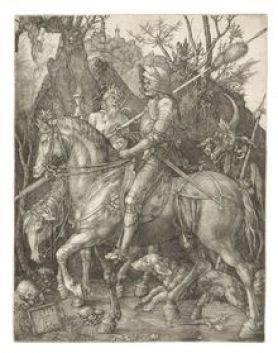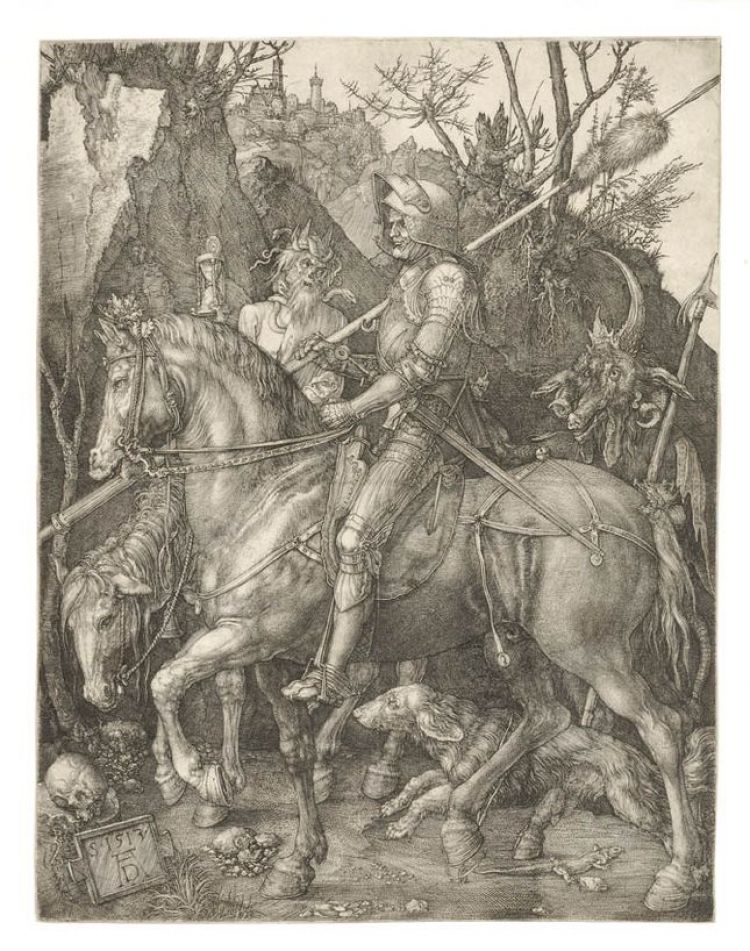The Knight, Death and the Devil

The Knight, Death and the Devil (1513), Saint Jerome in his Cell (1514) and Melencolia (1514) are masterpieces of burin engraving, three of Dürer's most admired works.
In each of these three "Master Prints", Dürer makes use of a complex system of symbols to depict different virtues, representing particular forms of commitment in the life of man. The qualities depicted in this case are moral ones, involving our deeds, while in Saint Jerome they are religious, involving spiritual contemplation, and in Melancolia they are intellectual and involve creative thought.
The Knight, Death and the Devil has given rise to countless interpretations. The most common among these sees Dürer's horseman as a Christian knight who has succeeded in defeating Death and the Devil, his two enemies. Another interpretation sees the horseman as a "soldier of fortune", or mercenary. Here he is both an accomplice and a victim of Death and the Devil, who prepare to lead him away in a Dance of Death.
